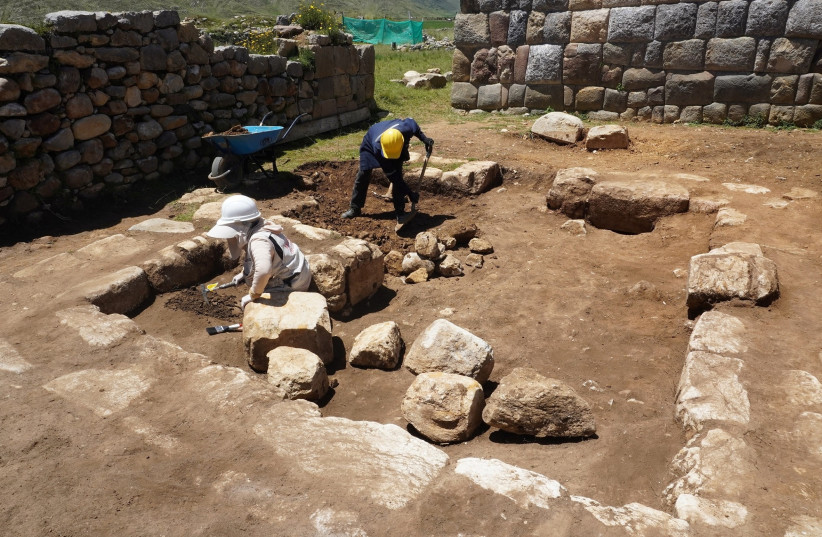Peruvian archaeologists unearth 500-year-old Inca ceremonial bath

The "finely carved" bath averages some two-meters in depth, with independent pools and spillways and a central passage taking water into a drainage duct.
Archaeologists in the Peruvian Andes have discovered an Inca bathing complex built half a millennia ago, which they believe may have served the elite of the sprawling empire than once dominated large swathes of South America.
Found near the "House of the Inca" in the Huanuco Pampa archaeological zone in central Peru, local archaeologists believe that the bath may have served a religious purpose for high-ranking members of the Inca empire, which 500 years ago extended from southern Ecuador to the center of Chile.
Significance of the ritual bath
Luis Paredes Sanchez, project manager at Huanuco Pampa, said the structure was similar to "more hierarchical, restricted and sacred spaces within the Inca administrative centers, because rather than having a utilitarian or hygienic function, they also served for religious functions and worshiping ancestors."
The "finely carved" bath averages some two-meters in depth, with independent pools and spillways and a central passage taking water into a drainage duct that divides the room into two small platforms, or "benches" for the Inca, Peru's culture ministry said in a statement.
The Huanuco Pampa archaeological site is part of the Qhapaq Nan project, a complex 25,000-kilometer-long road network that linked Ecuador, Colombia, Peru, Bolivia and Argentina. The road system was declared a World Heritage Site in 2014.
Peru is home to hundreds of archaeological sites across the country, including the Machu Picchu citadel in the Inca capital of Cusco, and the Nasca lines, massive designs drawn in Ica's coastal desert region over 1,500 years ago.
Jerusalem Post Store
`; document.getElementById("linkPremium").innerHTML = cont; var divWithLink = document.getElementById("premium-link"); if (divWithLink !== null && divWithLink !== 'undefined') { divWithLink.style.border = "solid 1px #cb0f3e"; divWithLink.style.textAlign = "center"; divWithLink.style.marginBottom = "15px"; divWithLink.style.marginTop = "15px"; divWithLink.style.width = "100%"; divWithLink.style.backgroundColor = "#122952"; divWithLink.style.color = "#ffffff"; divWithLink.style.lineHeight = "1.5"; } } (function (v, i) { });

